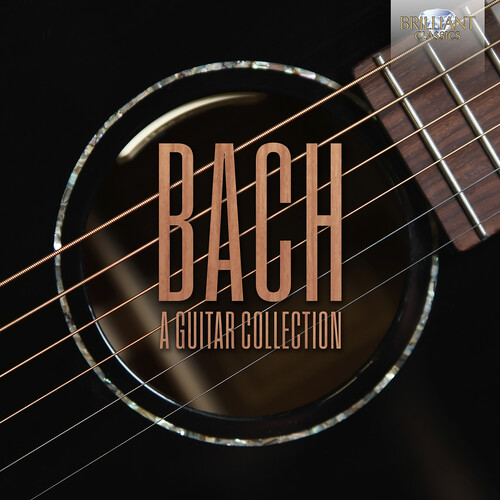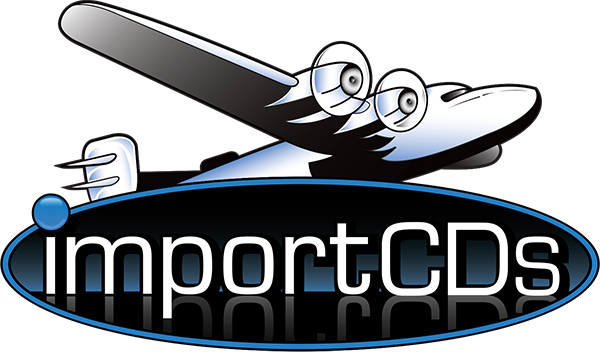Show results for
Deals
- 4K Ultra HD Sale
- Action Sale
- Alternative Rock Sale
- Anime sale
- Award Winners Sale
- Bear Family Sale
- Blu ray Sale
- Blues on Sale
- British Sale
- Classical Music Sale
- Comedy Music Sale
- Comedy Sale
- Country Sale
- Criterion Sale
- Cult Films sale
- Documentaries Sale
- Drama Sale
- Electronic Music sale
- Horror Sci fi Sale
- Kids and Family Sale
- Metal Sale
- Music Video Sale
- Musicals on Sale
- Mystery Sale
- Naxos Label Sale
- Page to Screen Sale
- Paramount Sale
- Rap and Hip Hop Sale
- Reggae Sale
- Rock
- Rock and Pop Sale
- Rock Legends
- Soul Music Sale
- TV Sale
- Vinyl on Sale
- War Films and Westerns on Sale

J.S. Bach: A Guitar Collection
- Format: CD
- Release Date: 8/2/2024

J.S. Bach: A Guitar Collection
- Format: CD
- Release Date: 8/2/2024
- Composers: Johann Sebastian Bach
- Label: Brilliant Classics
- Number of Discs: 6
- UPC: 5028421972893
- Item #: 2649290X
- Genre: Classical Artists
- Release Date: 8/2/2024
CD
Price: $28.49

Get it between
Mon. Jun 30 - Tue. Jul 15
Deliver to
Product Notes
This rich set of music by J.S. Bach (or connected to
him by attribution or publication) and transcribed for the guitar provides a stunning example of the versatility of the composer's music, the unquestionable genius of which renders it universally successful on any instrument with polyphonic capabilities (solo string instruments included). Luigi Attademo and Stefano Cardi provide an eclectic selection of Bach pieces in successful transcriptions by themselves and virtuoso classical guitarist and arranger David Russell. This is followed by a large set from Anna Magdalena's Notebook performed and transcribed by Jan Depreter, and complete sets of the Violin Sonatas & Partitas and Lute Suites by Franceso Teopini and Attademo, respectively. In the words of the performer on Disc 1, Luigi Attademo: 'the guitar as we know it today didn't exist in Bach's time, and although there was certainly a baroque guitar, it was not widespread in Germany. The baroque lute was the string instrument closest to Bach, and there was certainly one in his collection of instruments, though he probably didn't play it. In any event he knew a number of lutenists, including L. Krebs. But we are not using Bach's proximity to the lute to justify transcriptions for the guitar, rather pointing out that on various occasions he transcribed music originally composed for a given instrument in arrangements for a similar but different instrument.' In Cardi's set on Disc 2, the sound of the guitar, it's rich dynamics and full polyphonic capacity are exploited for creating performances of some of the harpsichord pieces composed mainly for teaching purposes in Bach's Cöthen period (1717-23) or in his early Leipzig years. The rather varied content also leaves room for pieces by other composers, such as a Suite by Georg Philipp Telemann (whose Corrente is featured in this recording) and a Partita by Gottfried Heinrich Stölzel, where the central part of the Minuet, the Trio, was composed by J.S. Bach. Disc 3 features selections from Depreter's transcription of the entire second Notenbüchlein für Anna-Magdalena Bach (1725) for classical guitar, made during his studies. The project to record it all spanned two decades but benefits from the continuity of having the same recording producer and engineer, Peter de Wint, and the same microphones and recording material through all the sessions. Teopini's recording of the Sonatas and Partitas BWV1001-6 on Discs 4 & 5 was born from his conviction that such masterpieces are now a mandatory part of a guitarist's repertoire for the sake of personal development. His transcription faithfully complies with the original notation, in order to not corrupt the implied counterpoint created by Bach, yet his instrumental approach to the works is conceived with the aim of justifying an interpretation of the works on an instrument as unnatural for Baroque music as the modern classical guitar surely is, therefore viewing the instrument as a hybrid of both the violin and the harpsichord. The right hand takes the role of the latter, and Teopini carefully avoided using rest stroke throughout the recording, making sure that even the most expressive passages were realized with a free stroke technique The left hand is approached as a violinist would, holding the notes and using open strings as much as possible and arranging fingerings to promote tonal uniformity of all phrases, especially where sequential modulations occur. Attademo's recording of the Lute Music, on Disc 6, aims to bring to the fore the richness of Bach's music without denying the lapse of time that separates his time from ours. For that reason, the recording focuses on the study of Baroque performance practice, on the peculiarities of the author's writing, on secondary sources that indicate how Bach's music was originally played, and on the musical styles that Bach referred to and synthesised. As well as the four Suites for lute, the Prelude, Fugue & Allegro BWV998, Prelude BWV999 and Fugue BWV1000 are included.
